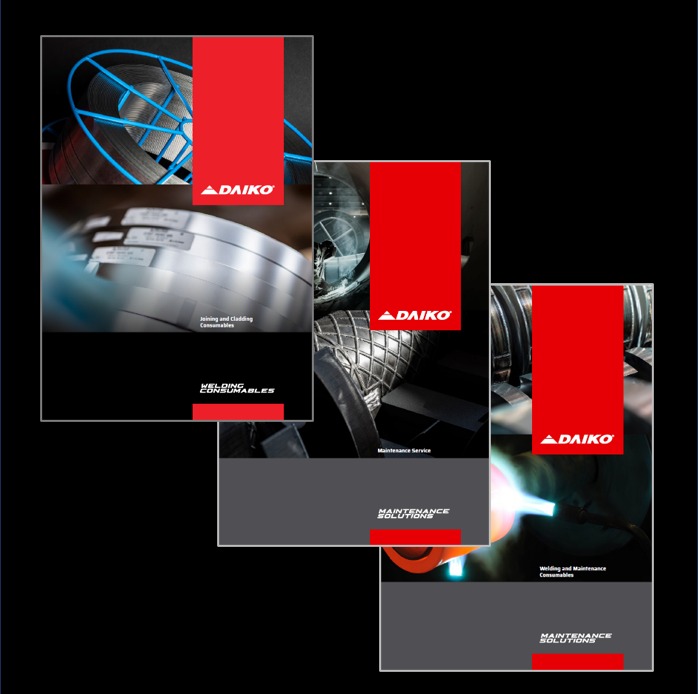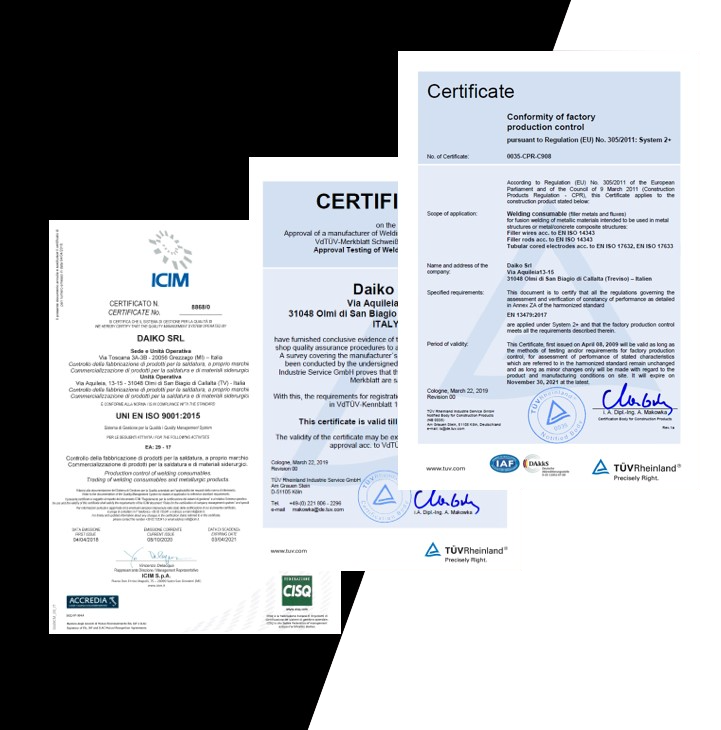- Home
- >
- All DAIKO products
- >
- AUSTENITIC STAINLESS STEELS
- >
- 309LNb
309LNb
Application
These specialized consumables are meticulously designed for applications necessitating niobium-stabilized weld metal overlays or inlays, specifically on C-Mn or low alloy steels. The inclusion of a minimum niobium content of 0.7% in the undiluted weld metal ensures the formation of a fully stabilized deposit, closely resembling a 347 composition. This characteristic proves particularly advantageous when applied in the initial layer on mild and medium carbon steels. Notably, these consumables find utility as the primary run when welding 321 or 347 clad steels, providing a robust foundation before concluding the process with 347-type weld metal. It's crucial to recognize that while these consumables exhibit versatility, they are not recommended as a substitute for 309L types in dissimilar welded joints. Strategic selection and application of these consumables guarantee optimal results in scenarios requiring the precision of niobium-stabilized weld deposits.
Alloy Type
A low carbon 309 type weld metal with a minimum niobium level of 0.7%.
Microstructure
In the as-welded condition the microstructure consists of
austenite with a ferrite content of 8-20FN.
Materials
There are no comparable parent materials and it's normally used for overlays only.
Welding & PWHT
The preheat requirements are contingent on the hardenability of the base material, ranging from no preheat in mild steel to a requirement of up to 200°C in hardenable steels with 0.4% carbon content. With a typical dilution range of 25-30% in medium carbon steel, these consumables have the capability to produce a fully austenitic weld deposit. It is well-established that weld metals containing niobium are particularly susceptible to hot cracking when ferrite is limited. To mitigate dilution in overlays, it is advisable to meticulously control welding parameters and strive for a 50% bead overlap. While post-weld heat treatment (PWHT) may induce some weld metal embrittlement, ductility is expected to remain within acceptable limits under standard conditions. However, fusion boundary embrittlement tends to be more pronounced, necessitating a thorough evaluation through representative procedure tests to establish acceptability.
Products of the line 309LNb
| Product name | Process | AWS specifications | EN ISO specifications | |
| G-TECH 309Nb | SMAW |
AWS A5.4
E309Cb-16 |
EN ISO 3581-A
23 12 Nb R 32 |
|
| DAIKOSTRIP 309LNb | ESW SAW |
AWS A5.9
EQ309LNb |
EN ISO 14343-A
B 23 12 Nb |


